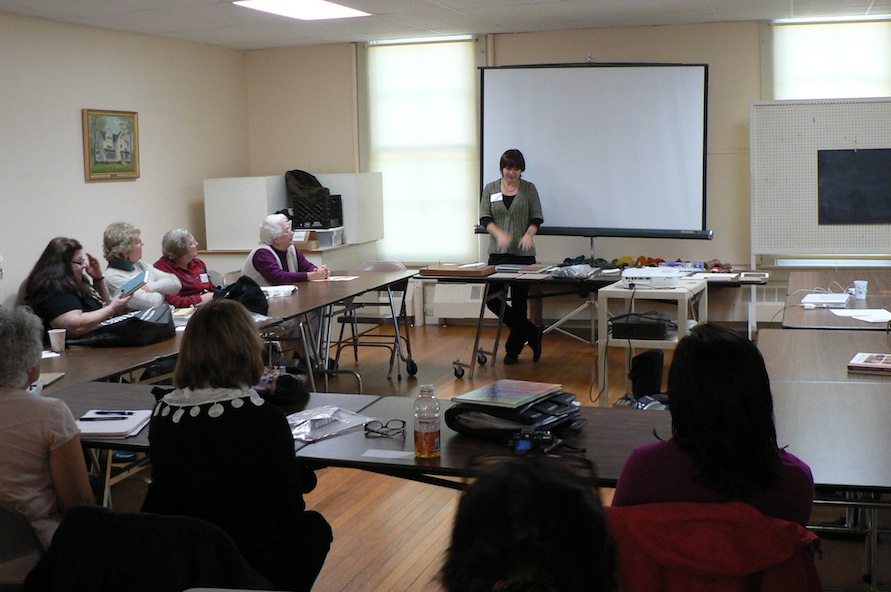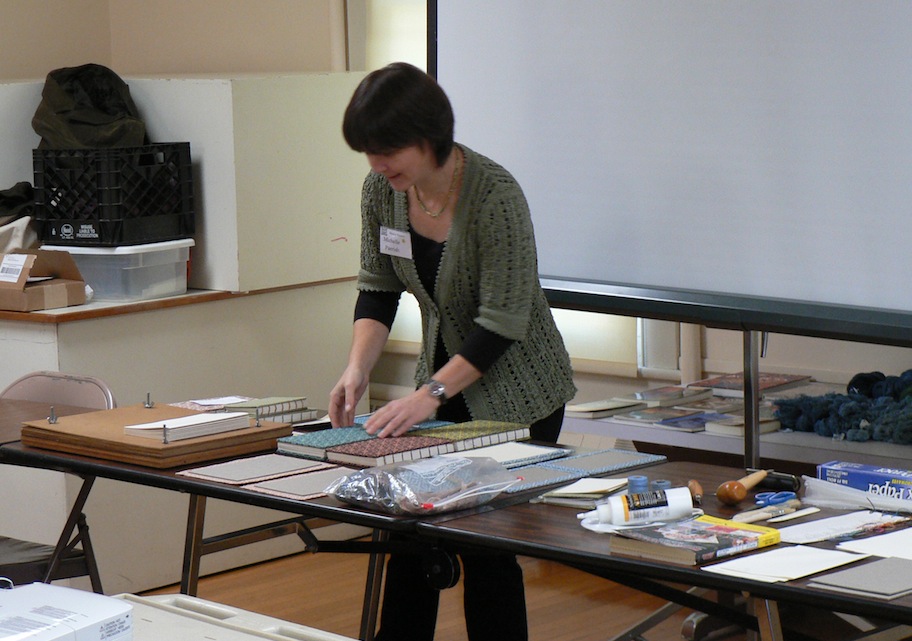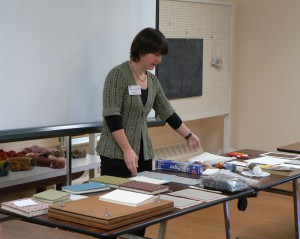On Wednesday November 14th I gave a presentation to the Weavers of Western Massachusetts (12/24/2023 Edited to add, they have a website now so I added a link!) about my Coptic bound books with handwoven cloth covers. It was very flattering to be invited to share my work with such an accomplished group of weavers, and I really appreciated the opportunity to talk about my process to an interested audience. It was a lot of fun.
Many of the photos that I used in my slideshow have already been featured here on my blog. However, in putting together the slide show I realized that I do not have good photo documentation of certain steps in the book-binding process, including sewing the covers and signatures step-by-step. That will take a little more time to develop, since I can’t photograph myself while I sew!
Here are some photos of my talk. Thanks to Lisa Hill who was kind enough to be my photographer as well as my technical support!
This one shows some members of the audience and the classroom space at the Hill Institute in Florence, MA, where the guild meets (and where I earned my Master Weaver certificate).
Here I’m talking about my last batch of books with naturally dyed pattern weft yarns. The blue woad-dyed one that I’m touching is being passed around in the photo above.
Here’s the table with all the book-binding tools and materials that I use, and samples of book covers showing various stages of the process.
On the far right, above, are the paper templates that I use to center the pattern on the book board and decide where to cut the cloth. My tools include a rotary cutter, exacto-knives, awls, brushes, a palette, a phone book (my book cradle for punching holes in the signatures and the covers), and bone folders. Other materials include wax paper, book board (I prefer 98 mil), PVA glue, and the paper for the signatures. In the foreground is the press I use (which I supplement with a stack of art books for weight).
Below is a glimpse of the table behind me with some of my naturally dyed yarns. I set up the display to show that the same dyestuffs yield different colors on protein fibers (wool and alpaca) than on cellulose (cotton, linen, and a cotton-linen blend). Often the colors on cellulose fibers are less bright, clear, or dark than on protein fibers.
I have been working hard to master cellulose dyeing, and I am pleased with many of the colors I am able to get. But I have a long way to go with certain colors. In the photo, the protein fibers are in the back row and the front row shows the cellulose fibers in skeins and on cones. From left to right the yarns are dyed with woad, weld, orange cosmos, madder, and umbilicate lichen.
Many thanks to the Weavers of Western Massachusetts for inviting me to share my work.




